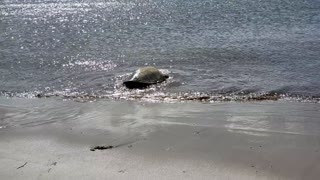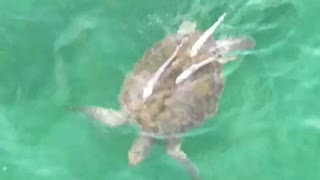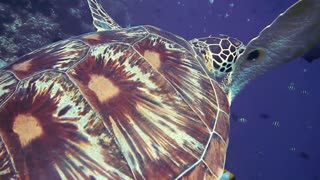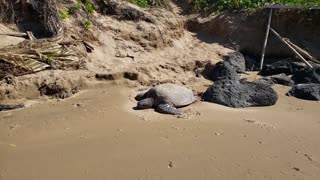THE SEA OTTER
Sea otters (Enhydra lutris) are marine mammals known for their charming and playful behavior. They belong to the family Mustelidae, which includes other animals like weasels, badgers, and minks. Sea otters are specifically adapted for a fully aquatic lifestyle and are often found in coastal waters along the North Pacific Ocean, including the coastlines of North America (from California to Alaska), Russia, and Japan.
Here are some key facts and characteristics of sea otters:
Appearance: Sea otters have dense fur that traps air, providing excellent insulation against cold water. They typically have brown to reddish-brown fur, and their fur is one of the densest of any animal, with up to 1 million hairs per square inch.
Size: Adult sea otters can weigh between 30 to 100 pounds (13 to 45 kilograms) and can reach lengths of 3 to 4 feet (0.9 to 1.2 meters). Males are usually larger than females.
Behavior: Sea otters are known for their playful and social behavior. They often float on their backs on the water's surface and use their forelimbs for various activities, such as grooming their fur and cracking open shellfish.
Diet: Sea otters primarily feed on marine invertebrates, especially sea urchins, clams, crabs, and various shellfish. They are a keystone species in kelp forest ecosystems because they help control the population of sea urchins, which would otherwise overgraze kelp beds.
Reproduction: Sea otters have a relatively slow reproductive rate. Females typically give birth to one pup at a time, and the gestation period is about 6 months. Mothers are very attentive to their pups, carrying them on their chests and grooming them extensively.
Conservation Status: Sea otters have faced threats in the past, including fur hunting, pollution, and habitat degradation. Conservation efforts have led to their recovery in some areas, but they are still listed as either endangered or threatened in various regions, depending on local populations.
Legal Protection: Sea otters are protected by laws and regulations in many countries. The Marine Mammal Protection Act in the United States and the Convention on International Trade in Endangered Species of Wild Fauna and Flora (CITES) are examples of international and national measures aimed at their protection.
Importance to Ecosystems: Sea otters play a crucial role in maintaining the health of coastal ecosystems. By controlling the population of sea urchins, they help preserve kelp forests, which, in turn, provide habitat for numerous other marine species.
Adaptations: Sea otters have several adaptations for their marine lifestyle, including webbed feet for efficient swimming, a streamlined body shape, and the ability to close their nostrils and ears underwater.
Overall, sea otters are fascinating creatures with a unique combination of physical adaptations and ecological importance in their marine environments. Efforts to protect and conserve them are essential to the health of coastal ecosystems.
-
 2:50
2:50
SlowJo RC
1 year ago $0.03 earnedP-51 sea Otter
151 -
 5:41
5:41
Da Beach Life
3 years ago $0.01 earnedA Sea Turtle
884 -
 0:36
0:36
Elfik81
2 years agoSea turtle
131 -
 0:50
0:50
eylersigns
2 years agoSea turtle
27 -
 2:44
2:44
rosomar
1 year agoSea Trout
8 -
 0:11
0:11
oreski
2 years agoCat - Otter
29 -
 1:13
1:13
Nature and wildlife
3 years agoSea Turtles
58 -
 0:20
0:20
JBB1962
3 years agoOtter with Fish
111 -
 2:29
2:29
Cheezburger
5 years agoAdorable Sea Otter Catches A Ride
4 -
 1:01
1:01
Da Beach Life
3 years agoBeached Sea Turtle
18